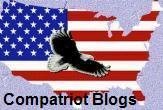How Many Knew This

John Hanson, American Patriot and First President of the United States
(1715-1783)
He was the heir of one of the greatest family traditions in the colonies and became the patriarch of a long line of American patriots – his great-grandfather died at Lutzen beside the great King Gustavus Aldophus of Sweden; his grandfather was one of the founders of New Sweden along the Delaware River in Maryland; one of his nephews was the military secretary to George Washington; another was a signer of the Declaration; still another was a signer of the Constitution; yet another was Governor of Maryland during the Revolution; and still another was a member of the first Congress; two sons were killed in action with the Continental Army; a grandson served as a member of Congress under the new Constitution; and another grandson was a Maryland Senator. Thus, even if Hanson had not served as President himself, he would have greatly contributed to the life of the nation through his ancestry and progeny.
As a youngster he began a self-guided reading of classics and rather quickly became an acknowledged expert in the juridicalism of Anselm and the practical philosophy of Seneca – both of which were influential in the development of the political philosophy of the great leaders of the Reformation. It was based upon these legal and theological studies that the young planter – his farm, Mulberry Grove was just across the Potomac from Mount Vernon – began to espouse the cause of the patriots.
In 1775 he was elected to the Provincial Legislature of Maryland. Then in 1777, he became a member of Congress where he distinguished himself as a brilliant administrator. Thus, he was elected President in 1781. Was John Hanson the first President of the United States?
The new country was actually formed on March 1, 1781 with the adoption of The Articles of Confederation. This document was actually proposed on June 11, 1776, but not agreed upon by Congress until November 15, 1777. Maryland refused to sign this document until Virginia and New York ceded their western lands (Maryland was afraid that these states would gain too much power in the new government from such large amounts of land). Once the signing took place in 1781, a President was needed to run the country. John Hanson was chosen unanimously by Congress (which included George Washington). In fact, all the other potential candidates refused to run against him, as he was a major player in the Revolution and an extremely influential member of Congress.
As the first President, Hanson had quite the shoes to fill. No one had ever been President and the role was poorly defined. His actions in office would set precedent for all future Presidents. He took office just as the Revolutionary War ended. Almost immediately, the troops demanded to be paid. As would be expected after any long war, there were no funds to meet the salaries. As a result, the soldiers threatened to overthrow the new government and put Washington on the throne as a monarch. All the members of Congress ran for their lives, leaving Hanson running the government. He somehow managed to calm the troops and hold the country together. If he had failed, the government would have fallen almost immediately and everyone would have been bowing to King Washington.
Hanson, as President, ordered all foreign troops off American soil, as well as the removal of all foreign flags. This was quite a feat, considering the fact that so many European countries had a stake in the United States since the days following Columbus. Hanson established the Great Seal of the United States, which all Presidents have since been required to use on all official documents. President Hanson also established the first Treasury Department, the first Secretary of War, and the first Foreign Affairs Department. Lastly, he declared that the fourth Thursday of every November was to be Thanksgiving Day, which is still true today.
The Articles of Confederation only allowed a President to serve a one-year term during any three-year period, so Hanson actually accomplished quite a bit in such little time. He served in that office from November 5, 1781 until November 3, 1782. He was the first President to serve a full term after the full ratification of the Articles of Confederation – and like so many of the Southern and New England Founders, he was strongly opposed to the Constitution when it was first discussed. He remained a confirmed anti-federalist until his untimely death.
Six other presidents were elected after him - Elias Boudinot (1783), Thomas Mifflin (1784), Richard Henry Lee (1785), Nathan Gorman (1786), Arthur St. Clair (1787), and Cyrus Griffin (1788) - all prior to Washington taking office. Why don't we ever hear about the first seven Presidents of the United States? It's quite simple - The Articles of Confederation didn't work well. The individual states had too much power and nothing could be agreed upon. A new doctrine needed to be written - something we know as the Constitution.
George Washington was definitely not the first President of the United States. He was the first President of the United States under the Constitution we follow today. And the first seven Presidents are forgotten in history.








































<< Home